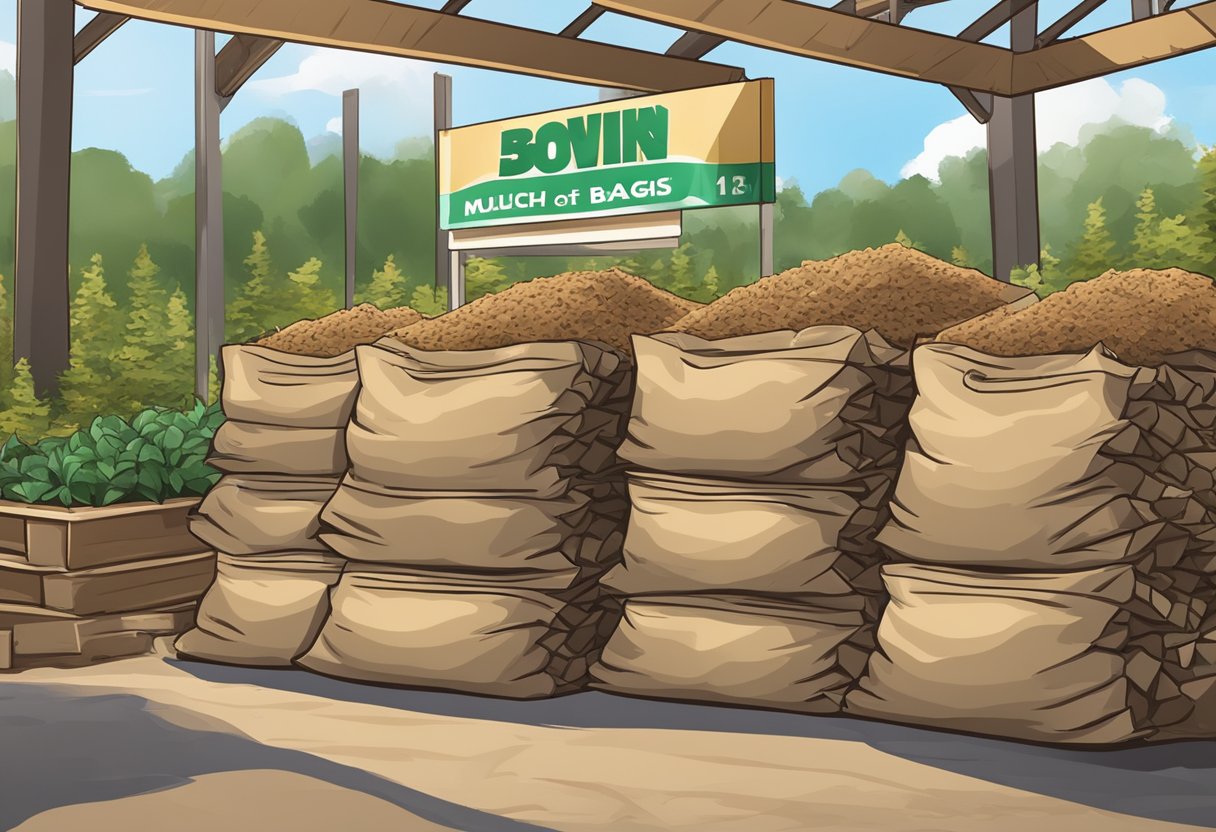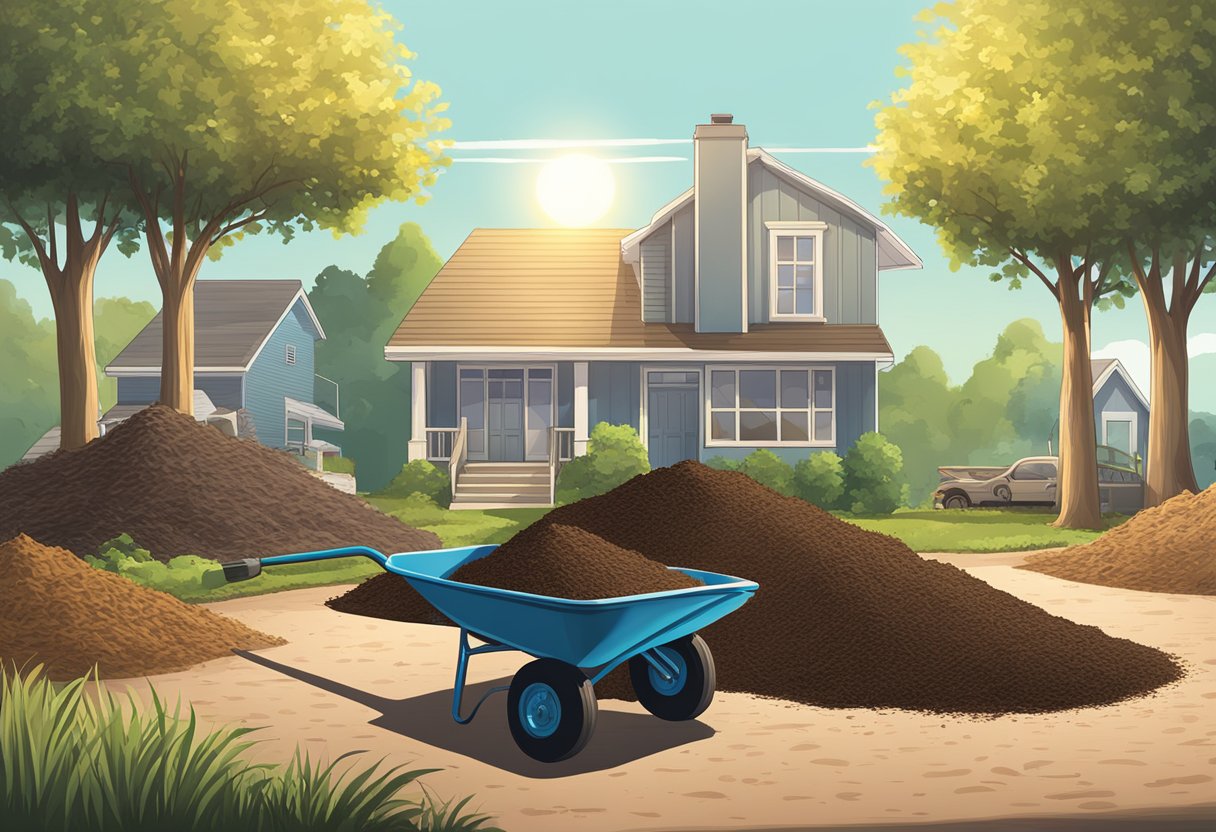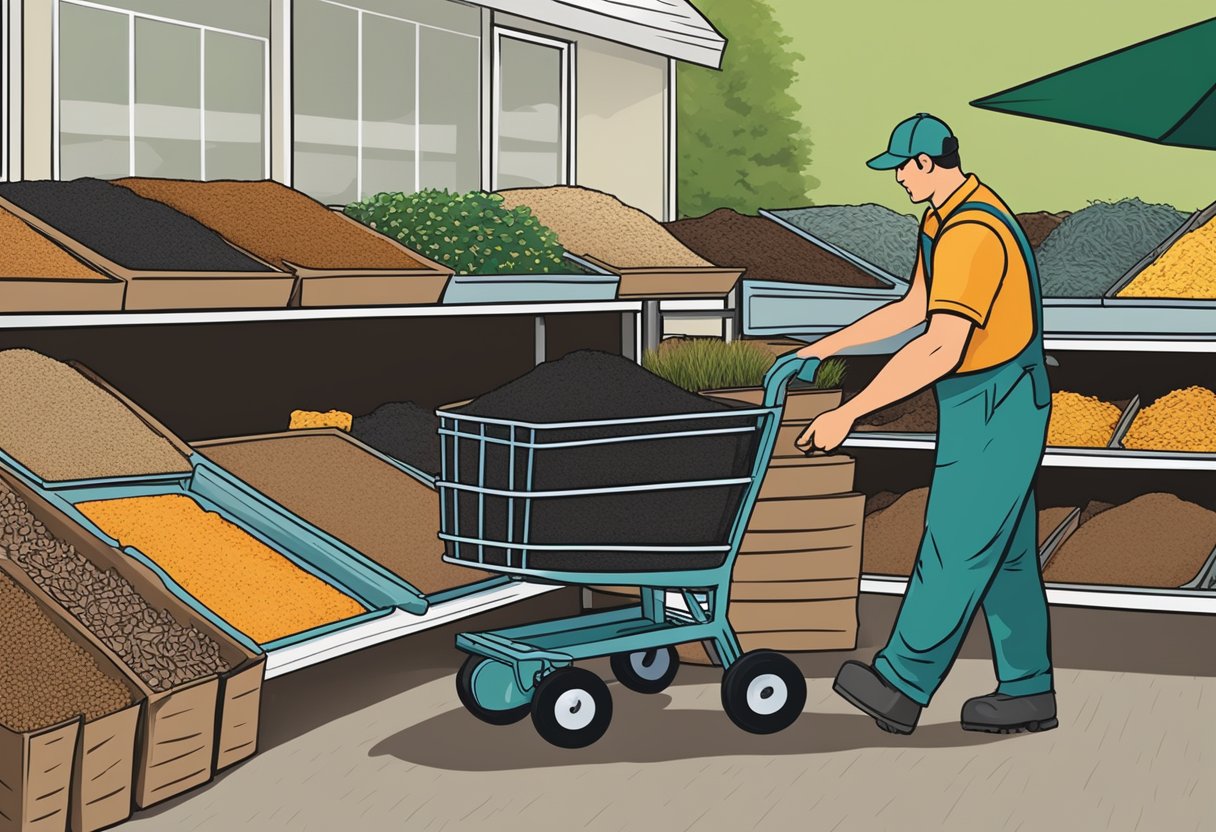As we approach the gardening and landscaping seasons, understanding mulch prices becomes critical for us as homeowners. Mulch is an essential component for garden beds not only because it enhances the visual appeal of our yards, but it also serves functional purposes such as moisture retention, temperature control, and weed suppression. The cost of mulch can vary significantly depending on factors such as type, color, and whether we choose organic or inorganic materials.

We need to consider the volume we require since mulch is often sold by the cubic yard or in bags, and the price adjusts accordingly. Bulk purchases are typically more economical for larger projects, but we must also take into account the delivery and potential installation costs if we’re not spreading the mulch ourselves. The pricing for a yard of mulch generally hinges on the type we go for, ranging from less expensive options like shredded bark to more costly variants such as rubber mulch.
As diligent homeowners calculating our landscaping budgets, it behooves us to compare the benefits of different mulch types against their costs. Though the upfront price may guide our choices, we shouldn’t overlook the longevity and the maintenance requirements of each option. To achieve a balance between cost-effectiveness and garden health, we should weigh the attributes of various mulches alongside their prices, keeping in mind that investing in the right type can ameliorate our garden’s ecosystem and save money in the long run.
Understanding Mulch Pricing

When we consider mulching our garden, it’s crucial to understand the dynamics of pricing. Mulch costs can fluctuate based on various factors, types of mulch, and additional services involved.
Factors Influencing Mulch Cost
Mulch pricing is influenced by material, the amount purchased, and whether it’s bagged or bulk. The national average cost for a cubic yard of mulch can range between $17 and $68, which can cover approximately 108 square feet at a 3-inch depth. When opting for bagged mulch, you can expect prices to be about $2 to $5.50 per bag.
- Material: Organic materials such as straw, shredded hardwood, and pine bark have different prices.
- Quantity: Buying in bulk often costs less per cubic yard than buying individual bags from home improvement stores.
- Delivery and Installation: Professional installation can add $20 to $45 per cubic yard to your cost. With mulch blowing services, labor costs can increase further.
Cost Considerations for Different Mulch Types
We must examine costs for specific mulch types, as this can greatly affect our overall budget. Types of mulch like cedar, cypress, and pine typically differ in price due to availability and processing requirements.
- Wood Chips: Affordable and readily available.
- Rubber Mulch: More expensive but lasts longer than wood mulch.
- Colored/Dyed Mulch: Slightly higher cost due to the dyeing process.
Additional Costs to Anticipate
Aside from the initial cost of mulch, additional fees can accrue from delivery and installation services. Mulch delivery costs will vary based on distance and quantity. Labor costs for installation by landscapers can range between $43 to $98 per hour.
- Labor: Costs for spreading mulch increases with landscaper fees.
- Mulch Blowing: This efficient method saves time but can be more expensive than traditional spreading.
By being aware of these specifics, we can make informed decisions and manage our gardening budget effectively.
Strategies for Mulch Purchasing and Installation

When considering mulch for your landscaping project, weighing the options between DIY mulching and hiring professional services is key. We’ll also look at how purchasing in bulk can offer economic benefits and discuss the importance of ongoing maintenance.
DIY Mulching vs. Professional Services
When we handle mulching ourselves, we can save on labor costs and have full control over the project timeline. However, for large or complex landscapes, hiring professional mulching services may be the more efficient route. Professionals have access to commercial-grade equipment for tasks like forestry mulching and land clearing, which might be impractical for a DIY approach.
Tip: For a mid-sized vegetable garden, DIY may be cost-effective, but for extensive land clearing, consider professional services.
Economic Benefits of Bulk Purchases
Buying mulch in bulk—by the truckload or pallet—can lead to significant savings, especially for large projects. Home Depot and similar stores often offer price discounts on bulk deliveries. This approach cuts down on packaging waste and repeated trips for more supplies.
- Bulk Purchase Considerations:
- Evaluate project size to determine mulch volume.
- Assess storage options for leftover materials.
- Compare bulk prices across different suppliers.
The Role of Landscaping and Maintenance
Regular weeding and mulching are crucial for maintaining a healthy vegetable garden or landscaped area. Mulch types vary, and each has specific benefits; for instance, cedar mulch is known for its pest-repelling properties. Including mulching in routine landscaping maintenance helps with moisture retention and weed control, leading to a more robust and vibrant garden.
Remember: Regular maintenance not only preserves the aesthetic appeal but can also prevent the need for costly land clearing in the future.